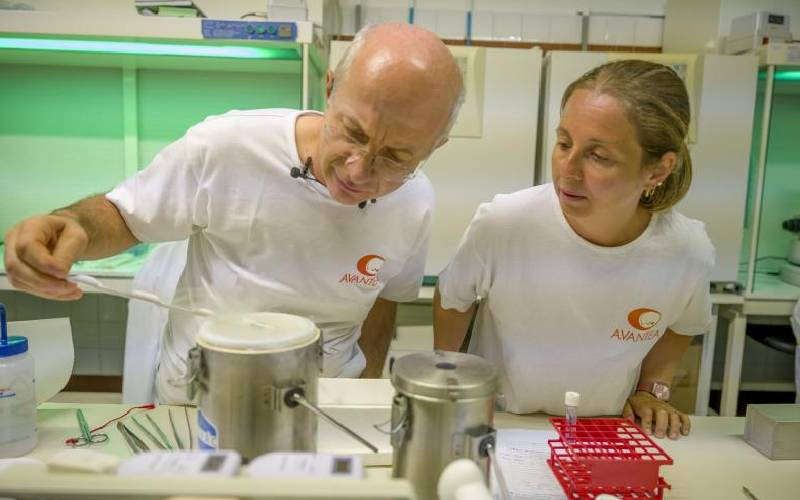
Artificial techniques of reproduction could provide the last chance of survival for the world's most endangered mammal – the northern white rhino in Kenya.
This conclusion from veterinary experts comes as a much-needed ray of hope to those involved in the conservation of the animals, both in Europe, the United States, and in Kenya – where three of the world's last remaining six now live.
Following the death of the last fertile northern white male in Ol Pejeta Conservancy earlier this year, experts from the Dvur Kralove Zoo in the Czech Republic, the Leibniz Institute for Zoo and Wildlife Research in Germany and the Kenya Wildlife Service gathered in Laikipia, Kenya to carry out health checks on the remaining three rhinos.
Physical condition
Dvur Kralove Zoo was home to Najin, Fatu, Suni and Sudan until 2009 – when a bold decision was made to move them to Ol Pejeta Conservancy in the hope that natural conditions would be more conducive to reproduction.
Various copulation between the northern whites have been witnessed by their keepers, and even a mating between a southern white male and one of the northern white females, but nothing has come to fruition.
Despite concerns over age and physical condition, the three rhinos were successfully anaesthetised. Examinations of the two females showed that neither is capable of natural reproduction. Sadly, the younger rhino Fatu has degenerative lesions in the uterus, but there is still hope that her mother, Najin, could conceive.
Her reproductive organs are in good health, but her weak hind legs make it difficult for her to support a mounted male, and could also cause complications during the added weight of pregnancy. Samples from the male, Sudan, showed a low sperm count, with low motility and some morphological abnormality. However, this does not rule out using his sperm for invitro fertilisation.
"We have provided the northern white rhinos with the best possible conditions for natural mating. However, recent death of the last male that was capable of reproduction and current health-state of the remaining three individuals lead to a situation in which the committee of experts in charge of this programme will now need to explore suitable options of artificial reproduction," Ol Pejeta Conservancy CEO Richard Vigne said.
 The Standard Group Plc is a
multi-media organization with investments in media platforms spanning newspaper
print operations, television, radio broadcasting, digital and online services. The
Standard Group is recognized as a leading multi-media house in Kenya with a key
influence in matters of national and international interest.
The Standard Group Plc is a
multi-media organization with investments in media platforms spanning newspaper
print operations, television, radio broadcasting, digital and online services. The
Standard Group is recognized as a leading multi-media house in Kenya with a key
influence in matters of national and international interest.
 The Standard Group Plc is a
multi-media organization with investments in media platforms spanning newspaper
print operations, television, radio broadcasting, digital and online services. The
Standard Group is recognized as a leading multi-media house in Kenya with a key
influence in matters of national and international interest.
The Standard Group Plc is a
multi-media organization with investments in media platforms spanning newspaper
print operations, television, radio broadcasting, digital and online services. The
Standard Group is recognized as a leading multi-media house in Kenya with a key
influence in matters of national and international interest.







